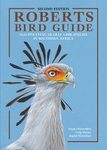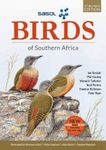About this book
Language: English
Abstract:
We analyzed the occurrence, movements, ecology, behavior, breeding, and specimen information for birds of upland woodland (1500-2200 m) and adjacent habitats on a 37200 ha ranch just north of the equator and immediately east of the Rift Valley, on the western edge of the Laikipia Plateau. Over 14.3 years between 1984 and 1999 one or both of us were in the study area for eight years. This is the first avifaunal investigation of Kenyan mid-altitude evergreen/deciduous woodland (partly treated in a broader, more diffuse paper by van Someren 1956). Increasing human population, movement of people into lands marginal for agriculture, and persistent clearing tor charcoal, firewood, and cultivation by poorly educated, often impoverished humans in still largely rural Kenya is threatening such woodland, as well as other habitats. The study area is relatively unpopulated, and despite some fires, livestock-grazing, firewood-gathering and other problems, is more or less maintained as a conservation area by the Gallmann Memorial Foundation.
Effects of land use, soil, vegetation, temperature, rainfall, evaporation, and other climatic factors are discussed as background for the studies, which were centered upon 16 major sites; concurrent investigation of honeyguide biology and movements to the widely scattered sites allowed observations of birds in all habitats. Altogether 472 species of birds were seen in the study area, including four threatened globally, and 18 threatened regionally (Bennun & Njoroge 1999, Stattersfield & Capper 2000). New information about their ecology', behavior, and breeding especially are documented. Aerial displays of Tawny Eagles Aquila rapax and Gabar Goshawks Micronisus gabar, sexually specific songs of Red-faced Sylvietta Sylvietta whytii, out-of-range occurrences (e.g., Crested Guineafowl Guttera pucherani, Barred Long-tailed Guckoo Cercococcyx montanus, African Pygmy Kingfisher Ceyxpictus, and others), several records of a large gray shrike Lanius spp., upslope (from Lake Baringo area) and downslope (from highlands to the south) movements of sunbirds, finches and others, and sympatric relations of species of francolins, thrushes, babblers, starlings, polymorphism in paradise monarchs, brood parasite-host relations, and others are among the new data presented. Major bird associations and various interspecific flocks occur, and their composition detailed, and 59 well-documented mobbings of predators, mostly aerial, are described with their diverse besiegers listed. Only 43% (c. 200) of species observed were resident at least somewhere on the study area.
Shifts in abundance and location, unexpected movements upslope from drier areas to the west and changes in habitat during the study reflect pressures on woodland and indeed other habitats. Human-induced deterioration seems inexorable in the region. Our studies will be well served if awareness and improving understanding of viable conservation measures result in the retention of the avifauna of at least this western section of the Laikipia Plateau.
Customer Reviews





































![Untersuchungen zur Systematik und Phylogenese der Holarktischen Sesiiden (Insecta, Lepidoptera) [Investigations on the Systematics and Phylogenetics of the Holarctic Sesidis (Insecta, Lepidoptera)]](http://mediacdn.nhbs.com/jackets/jackets_resizer_medium/17/170946.jpg?height=150&width=101)